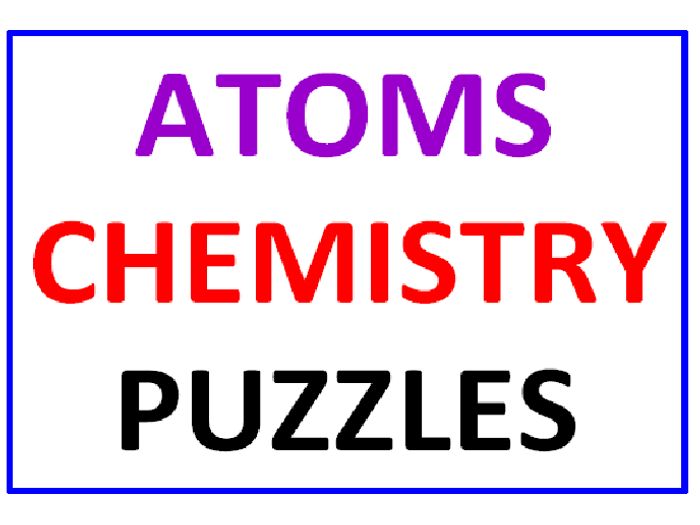

3-1 Online Activities - Atoms and Molecules ( Members Only ). 
3-1 Lesson Plan - Atoms and Molecules ( Members Only ).3-1 Guided Notes TE - Atoms and Molecules ( Members Only ).3-1 Guided Notes SE - Atoms and Molecules (FREE).3-1 Exit Quiz TE - Atoms and Molecules ( Members Only ).3-1 Exit Quiz SE - Atoms and Molecules (FREE).3-1 Bell Work TE - Atoms and Molecules ( Members Only ).3-1 Bell Work SE - Atoms and Molecules (FREE).3-1 Assignment TE - Atoms and Molecules ( Members Only ).3-1 Assignment SE - Atoms and Molecules (FREE).
#ATOMS AND MOLECULES WORD SEARCH ANSWER KEY FREE#
Here is your Free Content for the Atoms and Molecules Part of the Lesson! Atoms and Molecules - PDFs Discussing the answers usually, results in some excellent dialogue on this topic. Students must come up with a unanimous answer for each question. iTeachly Members can access all the content for the activity and the following lesson. We also provided some of the Resources below for you to use in class. Once the activity is finished, discuss the lab activity and answer post-lab questions. Students record their predictions and results of the lab activity. Get your teacher to check them as you complete them. Using the information in the table below, build each atom with their respective number of subatomic particles. Task 2: Build the following mystery atoms. These must also be placed in the nucleus. Lithium’s atomic mass is 6.94, which is rounded up to 7.

Arrange the protons in the nucleus and the electrons in the electron cloud.
Lithium has the atomic number 3, which means that it has 3 protons and 3 electrons. Select a colored candy to represent the protons, neutrons, and electrons. A copy of the atom template from your teacher.Ĭomplete the following on the Atom Template. Identify the location of the protons, neutrons, and electrons on your diagram. Label the nucleus and the electron cloud region on the diagram below:.  Using the information above complete the chart below:. Your teacher will inform you if you are allowed to eat it at the end of the lab. For example, if the atom has 5 protons (5 positive charges), it will have 5 electrons (5 negative charges) to balance it out. Since atoms are electrically neutral, the number of protons and the number of electrons are the same. Electrons have a negative charge and are so small that they are not considered part of the atomic mass number of an element. The amount of energy an electron possesses affects its distances from the nucleus. They are found in the electron cloud area surrounding the nucleus and are highly energetic. This number is the bottom number in each element box on the periodic table and is usually the larger of the two numbers.Īre the third type of subatomic particle. The combined number of protons and neutrons mass of an atom is called an atom’s atomic mass. Like protons, neutrons also contribute to the mass of an atom. These particles have no charge and are electrically neutral. The atomic number is the top number in the element box on the periodic table.Īre also found in the nucleus of the atom. This is called the atom’s atomic number and is used to identify the element. All atoms of a particular element have the same number of protons. These particles contribute to some of the atom’s mass, the mass of 1 proton is used as a unit of measurement of mass in the super small world of atoms. Have a positive charge and are found in the nucleus of the atom. They consist of a central region called the nucleus and an area surrounding the nucleus called the electron cloud.Ītoms contain three different types of subatomic particles: Atoms and Molecules Lab Activity Introductionīefore you start the building Atoms and Molecules lab activity you will need to introduce the following key vocabulary words.Ītoms are the smallest units of matter.
Using the information above complete the chart below:. Your teacher will inform you if you are allowed to eat it at the end of the lab. For example, if the atom has 5 protons (5 positive charges), it will have 5 electrons (5 negative charges) to balance it out. Since atoms are electrically neutral, the number of protons and the number of electrons are the same. Electrons have a negative charge and are so small that they are not considered part of the atomic mass number of an element. The amount of energy an electron possesses affects its distances from the nucleus. They are found in the electron cloud area surrounding the nucleus and are highly energetic. This number is the bottom number in each element box on the periodic table and is usually the larger of the two numbers.Īre the third type of subatomic particle. The combined number of protons and neutrons mass of an atom is called an atom’s atomic mass. Like protons, neutrons also contribute to the mass of an atom. These particles have no charge and are electrically neutral. The atomic number is the top number in the element box on the periodic table.Īre also found in the nucleus of the atom. This is called the atom’s atomic number and is used to identify the element. All atoms of a particular element have the same number of protons. These particles contribute to some of the atom’s mass, the mass of 1 proton is used as a unit of measurement of mass in the super small world of atoms. Have a positive charge and are found in the nucleus of the atom. They consist of a central region called the nucleus and an area surrounding the nucleus called the electron cloud.Ītoms contain three different types of subatomic particles: Atoms and Molecules Lab Activity Introductionīefore you start the building Atoms and Molecules lab activity you will need to introduce the following key vocabulary words.Ītoms are the smallest units of matter.








 0 kommentar(er)
0 kommentar(er)
